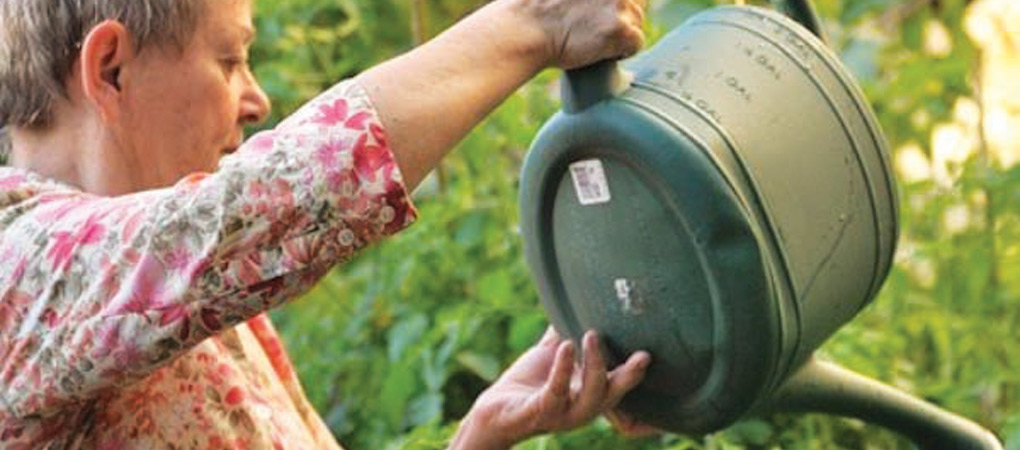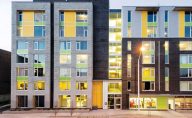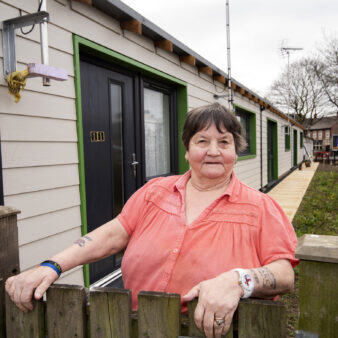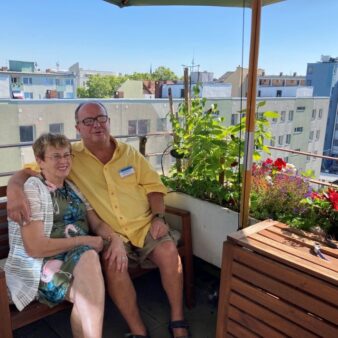Beaver Barracks is a large affordable and environmentally sustainable housing development located in downtown Ottawa, on a brownfield site. It was commissioned in 2007 to the Centretown Citizens Ottawa Corporation (CCOC) by the City of Ottawa through the Action Ottawa programme – the City’s primary programme for increasing the supply of low-income affordable housing in Ottawa. The programme is designed to facilitate the development of mixed income communities that are appropriately designed and managed, and built on a scale that ensures integration within the neighbourhood. The Beaver Barracks innovatively integrates a mixed housing model with environmentally sustainable building design and operations. In fact, Beaver Barracks is one of the most sustainable rental housing developments in Ottawa from both a design and lifestyle perspective. The development is mixed in terms of incomes – with market, below-market and deeply subsidised rents – as well as access requirements, age and household composition.
Project Description
Aims and Objectives
CCOC is a community-based, tenant and member directed, private non-profit housing organisation whose mission is to create, maintain and promote housing for those on low and moderate incomes. It is one of the largest private non-profit affordable housing providers in Canada. In 2007, CCOC won a competitive Request for Proposals from the City of Ottawa to develop the Beaver Barracks site, which is the biggest and most sustainable single development CCOC has done to date. Beaver Barracks aims to increase the supply of long-term affordable rental housing in downtown Ottawa and show that high performance energy-efficient buildings can be attractive, accessible, and affordable.
Context
Key problems faced in downtown Ottawa before the redevelopment of Beaver Barracks were similar to those in many other North American cities – the vast majority of new residential construction is private condominiums, which are unaffordable to a growing low and moderate income population. Older privately owned rental housing stock is in disrepair, providing poor quality housing, and is at risk of conversion and redevelopment. Specifically, there is a lack of affordable housing stock for families, older people living alone and people with accessibility needs.
At the time of the commissioning of the Beaver Barracks redevelopment, there were approximately 10,000 households on the City of Ottawa Social Housing Registry waiting list for subsidised housing, and a need for all household unit sizes from bachelors to large family sized homes. There was a gap to fill in terms of developing affordable rental housing that would regenerate the existing site, improve the quality of life of its tenants and keep families in the downtown area. The area where the development is located had previously been in decline throughout the 80s and 90s as residential and commercial development stagnated and parking lots proliferated. The influx of condominium developments in the last 10 years has threatened the mixed-income nature of the area, eroding the existing social fabric through gentrification.
Key features
Beaver Barracks is a large affordable housing development located in downtown Ottawa, on a brownfield site that was formerly occupied by WWII military barracks and which was sold by the Federal Government to the City of Ottawa in the early 1990s. It was earmarked for controlled rental housing and was the first site to be developed when a jointly funded government affordable housing programme was re-established.
The development comprises 254 dwelling units in five buildings, offering a blend of market, below-market and deeply subsidised rents for people on a range of incomes. Units range in size from studio flats to three bedrooms, for single persons and families, including older persons and those with accessibility problems. There is also ground floor commercial space in two buildings and meeting space for community groups. Tenants on subsidised rents are drawn from the City’s pre-qualified waiting list. The market rental tenants are selected on a first-come first serve basis. Market rents are capped to be no higher than the average market rent for the neighbourhood. It is one of the few affordable rental buildings in Ottawa’s core because of the gentrification pressures to build more profitable condominium developments.
During the design phase, integrated design workshops, known as charettes, were found to be an effective way of encouraging communities and their building professionals to think in a positive, innovative and collaborative way about building design, construction, operations and lifestyles.
Built to a high environmental standard, the development includes geothermal heating and cooling, a green roof, tenant-run gardens and a high performance building envelope, including triple glazed windows. Beaver Barracks is also wheelchair accessible and smoke free, with residents committing through their lease not to smoke in their apartments or on the property. Responsible waste diversion (recycling and organics) is encouraged by not providing rubbish chutes and having all waste sorted in a common room. Tenants are actively involved and sign a Green Commitment Pledge to reduce their environmental impact through lifestyle and consumer choices (although these green commitments are not legally binding).
Fifteen per cent of all the apartments are reserved for tenants who benefit from additional daily living support, and CCOC partners with several organisations to deliver that support, including to tenants with intellectual and physical disabilities, mental illness, or who have recently experienced homelessness. At Beaver Barracks there are 25 wheelchair-accessible units, and over 90 per cent of remaining units as well as all building amenity spaces are ‘visitable’ to people in a wheelchair.
Covering costs
- The total capital budget for the development of Beaver Barracks was US$64 million. CCOC used a combination of public and private financing, including CCOC equity (three per cent), government grants (35 per cent) and mortgage financing (62 per cent). Over 70 per cent of Beaver Barracks revenue comes from rent, either by tenants (42 per cent) or rent subsidies paid through the City (30 per cent). The remainder comes from a small mortgage subsidy from the Province of Ontario (16 per cent) and fees from various services (12 per cent).
- Over 80 per cent of CCOC’s total operating revenue in its full portfolio comes from rent (either paid by the tenants themselves or with state assistance,) 13 per cent from state operating subsidies, with the remainder coming from miscellaneous revenue from parking, laundry and commercial rent. A surplus of US$10,000 is anticipated on the US$20 million budget in 2013.
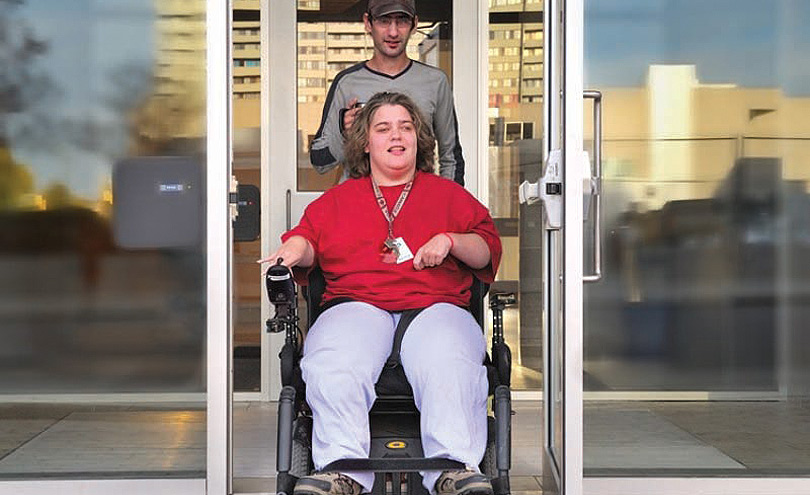
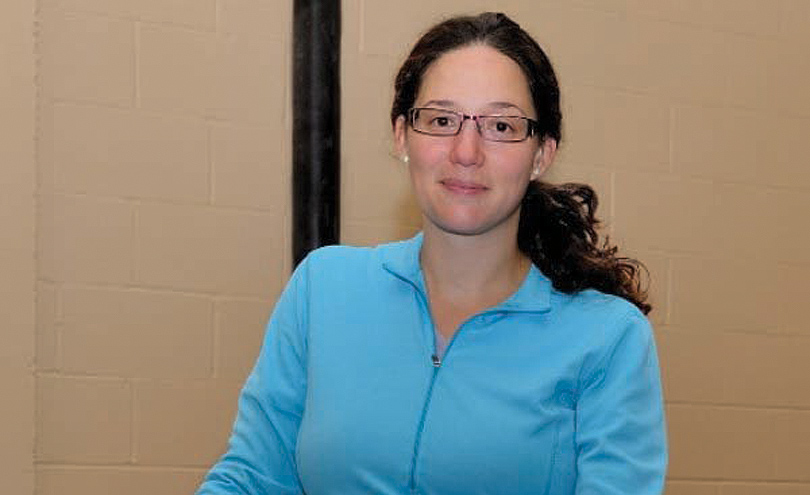
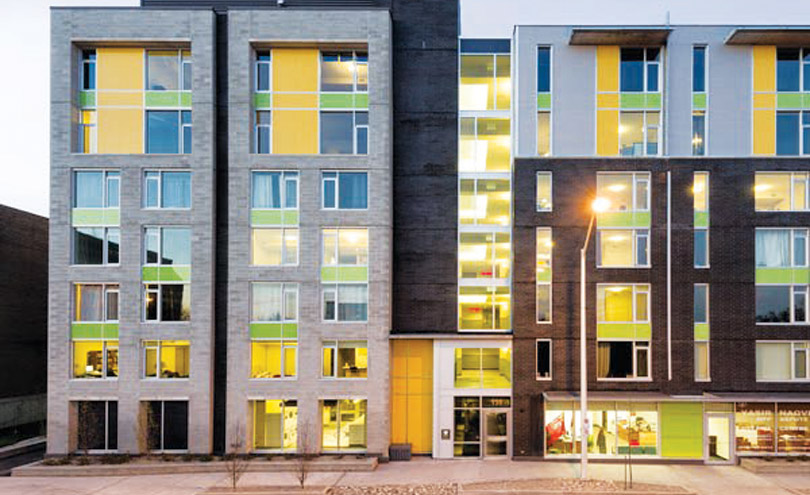
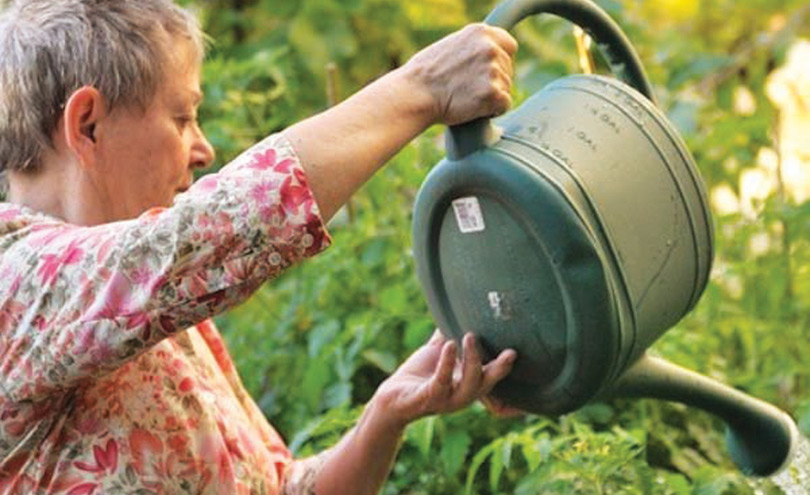
Impact
Although only recently fully completed, there has been a noticeable change in the neighbourhood. For 15 years the site was unoccupied and had been an eyesore. With 254 households including over 100 children, the development has helped reinvigorate the immediate neighbourhood. Local schools and day care centres which used to struggle with declining populations now have a permanent new source of families and children to use the available services.
CCOC is working with the City of Ottawa to develop financial templates and projection tables that will help the city and other local housing providers plan new affordable housing developments.
Why is it innovative?
- Integration of a mixed housing model with environmental building design and operations.
- Offering a blend of market, below market and deeply subsidised rents within one project.
- The sites and buildings have a reduced environmental footprint, including the materials and technologies used but also the active engagement of the residents in the process.
- Comprehensive waste recycling managed by residents is innovative in the Canadian context.
What is the environmental impact?
Beaver Barracks is one of the most sustainable rental housing developments in Ottawa from both a design and lifestyle perspective.
Resource efficient design features include:
- A geothermal heating/cooling system, an energy recovery ventilator, tight building envelope; and triple glazed windows ensure that the buildings use 40 per cent less energy than comparable buildings.
- Waste diversion is encouraged by not installing garbage chutes and using a common sorting room for waste, recycling and organics.
- Energy efficient washing machines, low-flow plumbing fixtures and drought-resistant xeriscaping (water-wise landscaping) help save water.
- The building envelope and floor include 40 per cent recycled material, and reclaimed wood was used for architectural details in the common areas.
- Promoting a sustainable lifestyle: All tenants sign a pledge to commit to greening their lifestyles and reducing their environmental footprint. During their annual lease renewal, tenants will be provided with a summary of their past year’s pledges; a calculation of the reduction in their carbon footprint as a result of their green commitments. Each building has signs in common areas that promote the environmental design aspects of the building and reinforce green norms of behaviour.
- CCOC facilitates a tenant-run Green Team to engage other tenants in green lifestyles, such as growing food in the on-site organic community gardens and providing workshops on harvesting fruit and nut trees.
- CCOC sees gardening as a step toward food sovereignty. Summer 2013 will see the grand opening of Victory Gardens – a central tenant garden which will include a children’s garden, an accessible garden and a plot for donation to the Food Bank.
- A variety of local food and food security programmes have been developed, including giving out ‘Buy Local’ food guides to all new tenants, with maps and lists of local farmers markets, helping start the Ottawa Good Food Box programme, providing free meeting space for gardening groups and working with local food security and gardening groups to increase participation.
In addition, the project also has wider environmental impacts:
- Reuse of a brownfield site reduces the need for urban sprawl and the destruction of natural habitat.
- The site’s central location enables tenants to walk to local shopping amenities, or use their bikes, take public transport or participate on a car-sharing programme which is located on site. Secure indoor bike parking and accommodation for e-bikes is provided. Car parking is available to less than 40 per cent of units.
Is it financially sustainable?
- The initial work relied upon grants being available from the government. However, an independent audit by the City of Ottawa found that Beaver Barracks may begin to generate a modest surplus after the first five to ten years of operations.
- Although the project was not conceived as one of community economic development, having an affordable home helps residents to live within their means and opens doors to education, employment and training.
- Beaver Barracks provides high quality rental housing to many households that would not otherwise be able to afford it. Over the full development, 45 per cent of tenants will pay ‘rent geared to income’ (30 per cent of their gross household income); 15 per cent of tenants will pay ‘below market rent’ (70 per cent of the full rent) and 40 per cent of tenants will pay no more than the average market rent for the neighbourhood, which in itself is significantly lower than typical rent for newer condominium apartments.
What is the social impact?
Community co-operation and social integration:
- Adding outdoor amenity space on balconies, rooftops or decks increases the available living area and provides a natural meeting spot for neighbours.
- Planter boxes and gardens provide a launch point for discussion, which CCOC facilitates by distributing free flower, vegetable and herb plants to tenants, and by setting up tenant-run gardens.
- As tenants get to know each other, they have organised pot lucks, games nights and kids’ clubs. They have also worked together on community issues, for example, leading the fight to restore a neighbourhood park after it was turned into a parking lot.
Skills development and resident involvement:
- CCOC has developed partnerships with a number of community groups to provide opportunities to tenants to increase their skills, two of which are Resilient Kitchen which provides workshops on cooking, canning and preserving and, more recently, knitting; and Just Food, which provides free workshops on seed saving, organic gardening and pest control.
- In addition to participating in CCOC governance, tenants are encouraged to get involved in their building at a practical level, taking advantage of green education programmes, gardening, composting, and participating in waste diversion initiatives.
- Further opportunities for social engagement have been facilitated, including Ottawa School of Art (provides bursaries to tenants for art classes), YMCA-YWCA (provides reduced membership fees for recreational programmes).
Combatting social inequality:
- All apartments are of the same quality and design, regardless of whether they are for market or subsidised rent.
- CCOC has always worked to meet the housing needs of those who struggle with issues that make their housing more difficult or precarious, such as mental health and addiction issues and physical disabilities.
- An accessible community garden is being designed in conjunction with tenants from ‘The In Community’, the agency that provides attendant support to people with complex physical disabilities.
Barriers
- As this project represented a 20 per cent growth in CCOC’s portfolio, it found itself absorbing a proportionate growth in staff, new tenants and new technologies in a short period, complicated by changes in the senior staff team. CCOC had to carefully manage transition and integration of new staff.
- This was the first multi-residential unit building in Ottawa where the entire development (indoor and outdoor) is smoke free. CCOC had to provide notice of eviction to some tenants who violated this policy, but in all cases tenants changed their behaviour and no one was evicted.
- There was a significant increase in construction material costs during the development that challenged the financial viability and affordability of the project. CCOC learned that a significant risk analysis when doing such an expensive project as well as redesign of the project is necessary in order to adjust the budget.
Lessons Learned
- Accessible unit design had to be adjusted in order to address individual resident concerns. CCOC realised after the first stage that tenants with accessibility issues need to be accommodated to address their individual needs and revised the design of the accessible units for the second stage to accommodate individual tenant accessibility concerns.
- CCOC invested a large amount of capital in the geothermal technology. Although this is innovative, it was expensive and complex, causing increased costs to operate. As a result, CCOC will put an emphasis on passive design in future development to decrease a building’s environmental footprint rather than active technology such as geothermal.
Evaluation
CCOC is monitoring several environmental and social performance indicators, including the utility consumption and waste diversion, as well as tenants’ fulfilment of their green commitments. Data is currently being collected on solid waste, energy use and electricity consumption to understand whether the designed energy savings can be achieved.
Transfer
Beaver Barracks serves as a model for future CCOC affordable housing developments, and has served as a pilot for many CCOC ‘green living’ tools: tenant working groups, environmental building signs, no smoking policy, waste diversion, community gardens, biking parking, and car sharing.
One of CCOC’s partners has used their experience of being involved in the Beaver Barracks development to go green in their other properties.

